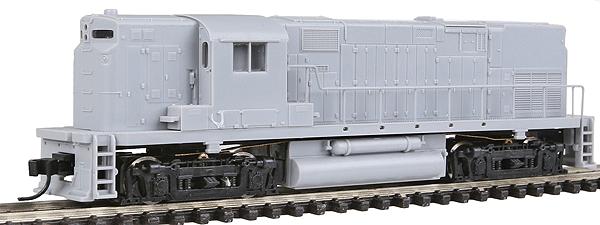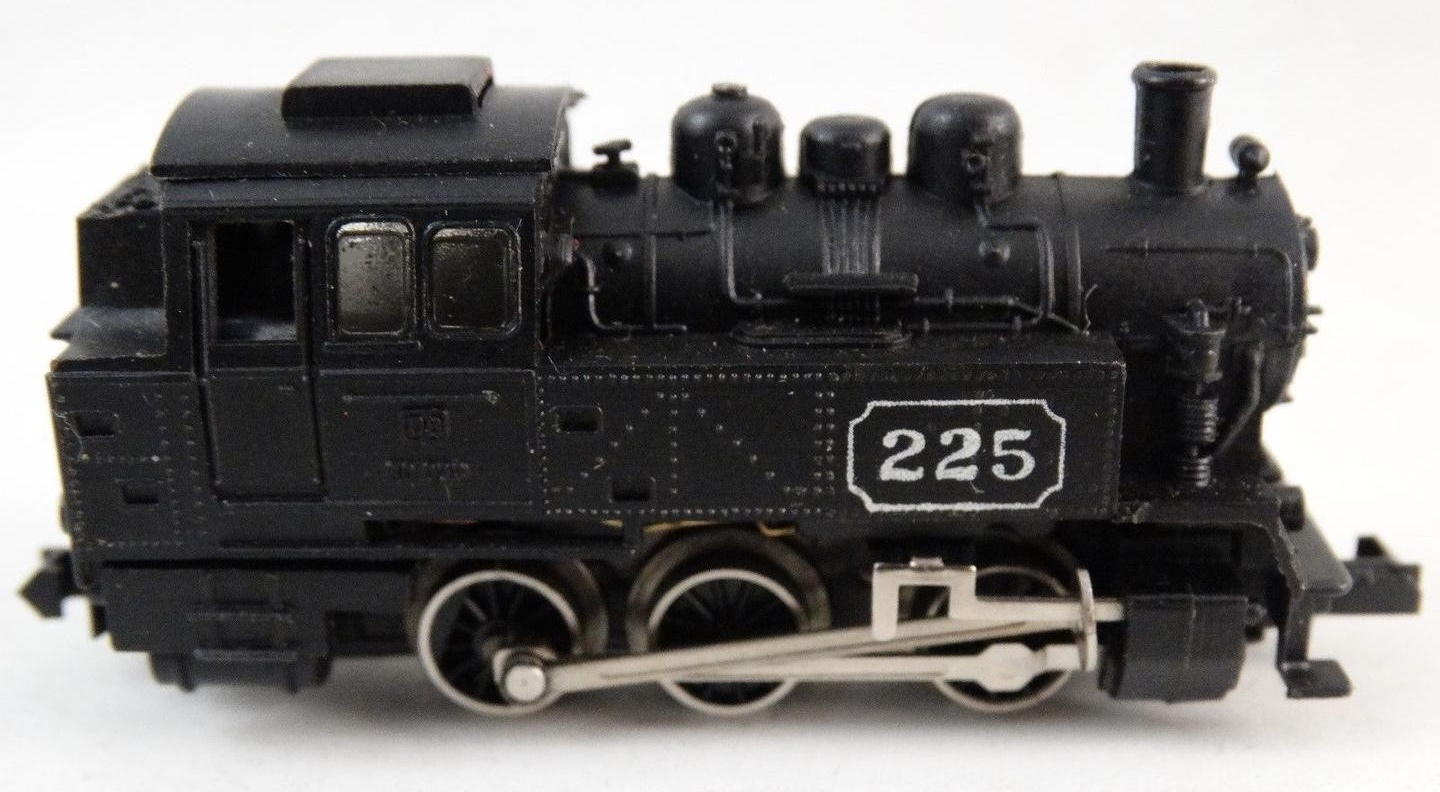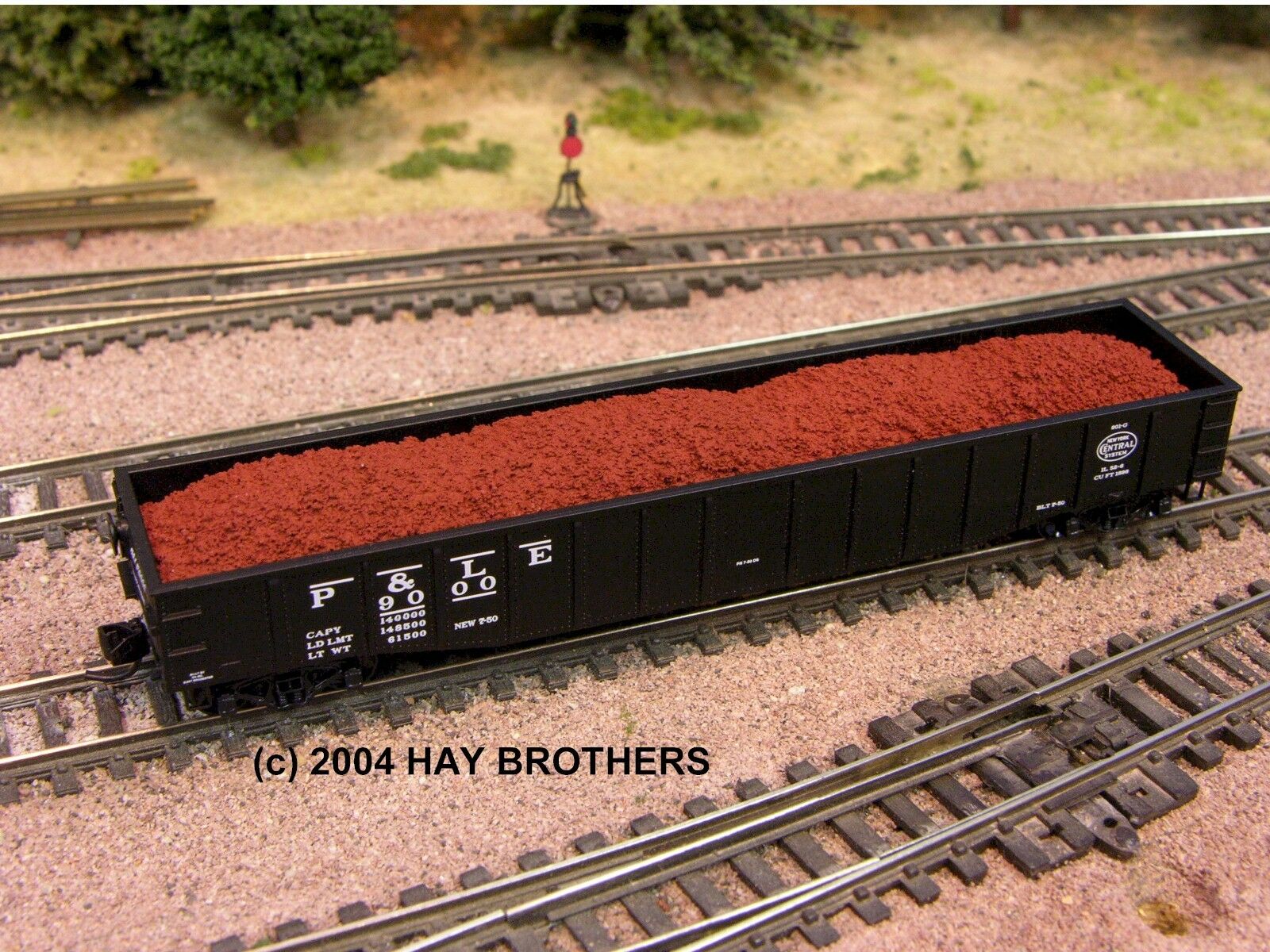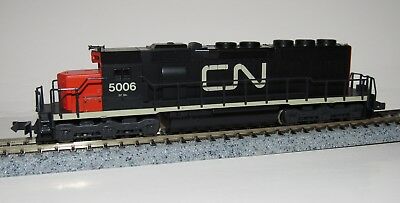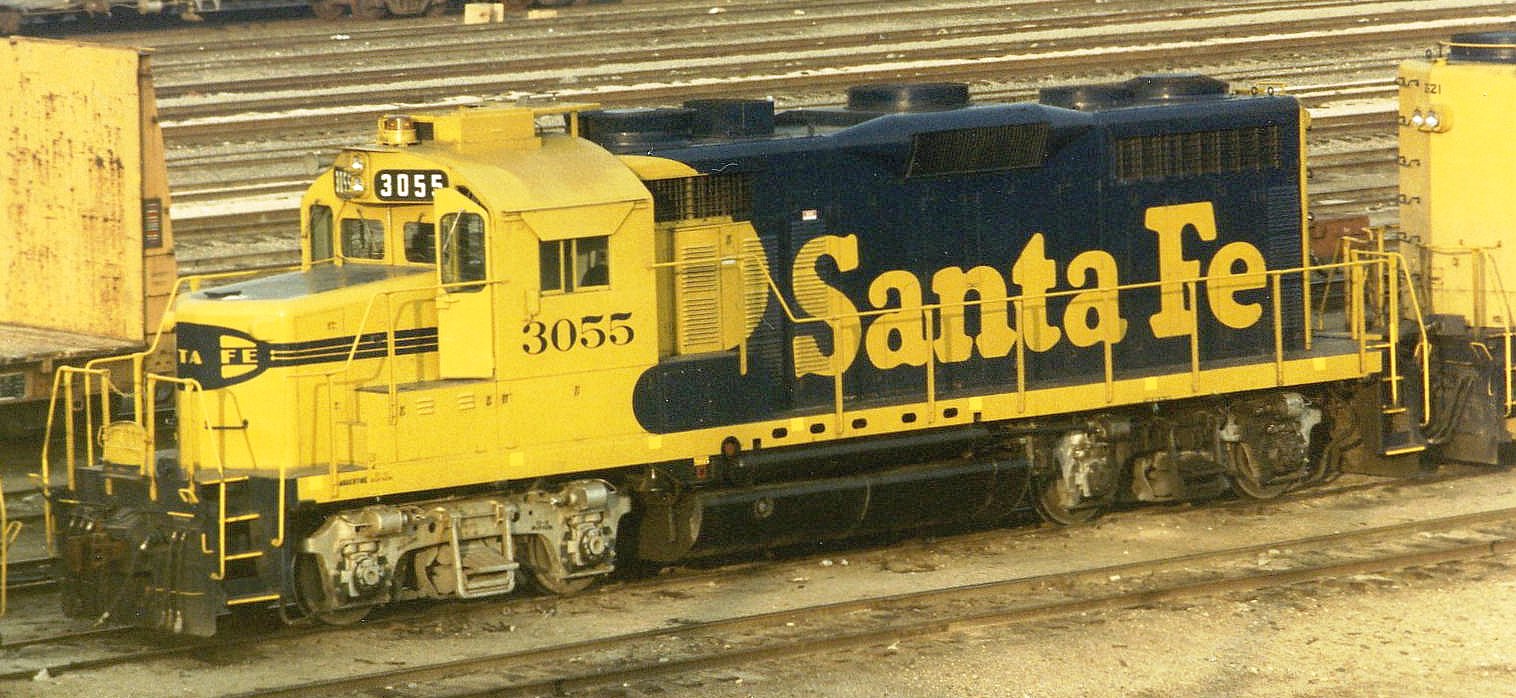Specific Item Information: ESU Sound
Model Information: Released in 1998, 2004 (revised version with Accumate couplers), and 2011 (by Walthers, DCC-Ready version, with MTL couplers).
Re-run under Atlas brand in 2021 after Atlas purchased the tooling from Walthers.
The 2011 model features:
Re-run under Atlas brand in 2021 after Atlas purchased the tooling from Walthers.
The 2011 model features:
- DCC-Ready Mechanism w/Clip-Fit Circuit Board;
- All-Wheel Drive & All-Wheel Electrical Pickup;
- Dual Machined Brass Flywheels;
- Heavy Die Cast Split-Frame Chassis;
- Powerful Skew-Wound Motor;
- Constant Intensity & Directional Headlights;
- RP-25 Wheels Operate on Code 55 & Larger Rail.
DCC Information: The 2011 version is DCC ready. Accepts the following plug-in decoders (non-sound):
- Digitrax DN163L0A: 1 Amp N Scale Mobile Decoder for Walthers Proto GP20 and similar.
- TCS L1D4: BEMF decoder designed to fit Life-Like GP20 locomotive.
The Atlas version of 2021 comes either with a factory-installed DCC Sound decoder (ESU LokSound) or in DC version (with pre-installed speaker).
It accepts the following plug-in decoders:
- DCC silent: Digitrax DN166I3: 1.5 Amp Mobile Decoder that fits InterMountain N Scale SD40-2 released 2017
- DCC Sound: ESU LokSound Select Direct Micro ref.73199.
- Digitrax DN163L0A: 1 Amp N Scale Mobile Decoder for Walthers Proto GP20 and similar.
- TCS L1D4: BEMF decoder designed to fit Life-Like GP20 locomotive.
The Atlas version of 2021 comes either with a factory-installed DCC Sound decoder (ESU LokSound) or in DC version (with pre-installed speaker).
It accepts the following plug-in decoders:
- DCC silent: Digitrax DN166I3: 1.5 Amp Mobile Decoder that fits InterMountain N Scale SD40-2 released 2017
- DCC Sound: ESU LokSound Select Direct Micro ref.73199.
Prototype History: An EMD GP20 is a 4-axle (B-B) diesel-electric locomotive built by General Motors' Electro-Motive Division between November 1959 and April 1962. Power was provided by an EMD 567D2 16-cylinder turbocharged engine which generated 2,000 horsepower (1,500 kW). EMD was initially hesitant to turbocharge their 567-series diesel engine, but was spurred on to do so following successful tests made by Union Pacific in the form of UP's experimental Omaha GP20 units. 260 examples of EMD's production locomotive model (with the EMD turbocharger) were built for American railroads.
From Wikipedia
Read more on American-Rails.com
From Wikipedia
Read more on American-Rails.com
Road Name History: The Consolidated Rail Corporation, commonly known as Conrail (reporting mark CR), was the primary Class I railroad in the Northeast U.S. between 1976 and 1999. Conrail is a portmanteau of "consolidated" and "rail" from the name of the company.
The U.S. federal government created Conrail to take over the potentially profitable lines of multiple bankrupt carriers, including the Penn Central Transportation Company and Erie Lackawanna Railway. With the benefit of industry-wide regulatory requirements being reduced (via the 4R Act and the Staggers Act), Conrail began to turn a profit in the 1980s and was turned over to private investors in 1987. The two remaining Class I railroads in the East, CSX Transportation and the Norfolk Southern Railway (NS), agreed in 1997 to split the system approximately equally, returning rail freight competition to the Northeast by essentially undoing the 1968 merger of the Pennsylvania Railroad and New York Central Railroad that created Penn Central. Following Surface Transportation Board approval, CSX and NS took control in August 1998, and on June 1, 1999, began operating their portions of Conrail.
The U.S. federal government created Conrail to take over the potentially profitable lines of multiple bankrupt carriers, including the Penn Central Transportation Company and Erie Lackawanna Railway. With the benefit of industry-wide regulatory requirements being reduced (via the 4R Act and the Staggers Act), Conrail began to turn a profit in the 1980s and was turned over to private investors in 1987. The two remaining Class I railroads in the East, CSX Transportation and the Norfolk Southern Railway (NS), agreed in 1997 to split the system approximately equally, returning rail freight competition to the Northeast by essentially undoing the 1968 merger of the Pennsylvania Railroad and New York Central Railroad that created Penn Central. Following Surface Transportation Board approval, CSX and NS took control in August 1998, and on June 1, 1999, began operating their portions of Conrail.
Brand/Importer Information: In 1924 Stephan Schaffan, Sr. founded the Atlas Tool Company in Newark, New Jersey. In 1933 his son, Stephan Schaffan, Jr., came to work for his father at the age of sixteen. Steve Jr. built model airplanes as a hobby and frequented a local hobby shop. Being an enterprising young man, he would often ask the owner if there was anything he could do to earn some extra spending money. Tired of listening to his requests, the hobby-store owner threw some model railroad track parts his way and said, "Here, see if you can improve on this".
In those days, railroad modelers had to assemble and build everything from scratch. Steve Jr. created a "switch kit" which sold so well, that the entire family worked on them in the basement at night, while doing business as usual in the machine shop during the day.
Subsequently, Steve Jr. engineered the stapling of rail to fiber track, along with inventing the first practical rail joiner and pre-assembled turnouts and flexible track. All of these products, and more, helped to popularize model railroading and assisted in the creation of a mass-market hobby. The budding entrepreneur quickly outgrew the limitations of a basement and small garage operation. Realizing they could actually make a living selling track and related products, Steve and his father had the first factory built in Hillside, New Jersey at 413 Florence Avenue in 1947. On September 30, 1949, the Atlas Tool Company was officially incorporated as a New Jersey company.
In 1985, Steve was honored posthumously for his inventions by the Model Railroad Industry Association and was inducted into the Model Railroad Industry Hall of Fame in Baltimore, Maryland. In addition, Steve was nominated and entered into the National Model Railroad Association Pioneers of Model Railroading in 1995.
In the early 1990s, the Atlas Tool Company changed its name to Atlas Model Railroad Company, Inc.
In those days, railroad modelers had to assemble and build everything from scratch. Steve Jr. created a "switch kit" which sold so well, that the entire family worked on them in the basement at night, while doing business as usual in the machine shop during the day.
Subsequently, Steve Jr. engineered the stapling of rail to fiber track, along with inventing the first practical rail joiner and pre-assembled turnouts and flexible track. All of these products, and more, helped to popularize model railroading and assisted in the creation of a mass-market hobby. The budding entrepreneur quickly outgrew the limitations of a basement and small garage operation. Realizing they could actually make a living selling track and related products, Steve and his father had the first factory built in Hillside, New Jersey at 413 Florence Avenue in 1947. On September 30, 1949, the Atlas Tool Company was officially incorporated as a New Jersey company.
In 1985, Steve was honored posthumously for his inventions by the Model Railroad Industry Association and was inducted into the Model Railroad Industry Hall of Fame in Baltimore, Maryland. In addition, Steve was nominated and entered into the National Model Railroad Association Pioneers of Model Railroading in 1995.
In the early 1990s, the Atlas Tool Company changed its name to Atlas Model Railroad Company, Inc.
Item created by: CNW400 on 2021-01-22 10:31:43. Last edited by Alain LM on 2021-01-23 05:12:06
If you see errors or missing data in this entry, please feel free to log in and edit it. Anyone with a Gmail account can log in instantly.
If you see errors or missing data in this entry, please feel free to log in and edit it. Anyone with a Gmail account can log in instantly.






